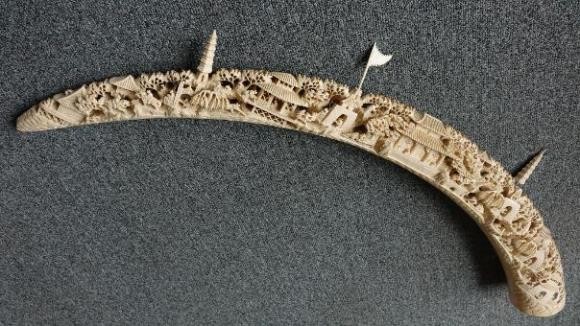
Radiocarbon Dating Reveals Gaps in Elephant Protection
02. 06. 2025
At the end of May, the journal Global Ecology and Conservation published the article Expert opinion versus radiocarbon dating in the ivory trade, which highlights the alarming inaccuracy of expert assessments in determining the age of ivory. The lead authors of the study are Mgr. Jitka Kufnerová (Institute for Environmental Studies, Charles University) and Kateřina Pachnerová Brabcová (Department of Radiation Dosimetry, Nuclear Physics Institute CAS).
Illegal ivory trade is one of the main drivers of declining elephant populations, with tens of thousands of animals killed each year by poaching. Both African and Asian elephants are protected under the CITES convention, which is recognized by nearly every country worldwide. National legislation typically implements this convention by banning trade in ivory that is not considered antique, although the definition of “antique” varies from country to country.
Our study, conducted in collaboration with the Institute for Environmental Studies at Charles University, provides the first systematic data evaluating the reliability of expert assessments of ivory offered on the Czech market. All analyzed artifacts were accompanied by assessments that claimed to document their antique status, i.e. originating from before 1947. However, using radiocarbon dating, we found that in 58.7% of cases, these assessments were incorrect and that most of the ivory actually dates from the 1970s.
This finding demonstrates that current practices are insufficient and that assessments based solely on visual inspection often fail. The study also provides a basis for proposing legislative changes that would include verifying the qualifications of experts, redefining the term “antique ivory” to reflect the limitations of radiocarbon dating, and maximizing the success rate of such analyses.

Read also
- International collaboration between NPI and a Japanese University brings new insights in the field of energy storage materials
- The Week of the Czech Academy of Sciences 2025 at the Nuclear Physics Institute
- The NPI helps shape the future of nuclear fusion in Europe
- NPI Co-Organized the European HTCondor Workshop
- Final call for the NPI Tandetron laboratory beam time proposals – ReMade project
- The NPI is working on a new STAR project
- RNDr. Aleš Cieplý, CSc., awarded the prestigious DSc. title
- Research of cosmic rays at NPI on the podcast Hlas na poušti Milana Mikuleckého (Voice in the Desert of Milan Mikulecký)
- The NPI organizes the 22nd annual conference Analytical and Algebraic Methods in Physics
- NPI Launches New Project on Lightning and High-Energy Atmospheric Phenomena Using Wind Turbines

